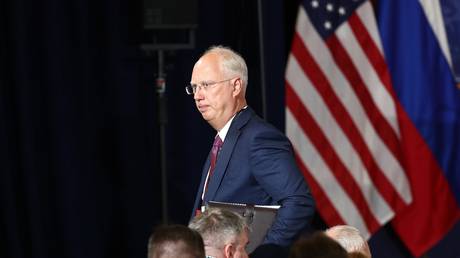
The arms manufacturer’s current employees don’t know how to make the Cold War-era launchers
Raytheon has lost the knowledge necessary to build Stinger anti-air missiles and is enlisting retired employees to restart production, the company’s president said in a recent interview. With production halted since 2003, Raytheon is struggling to meet Ukraine’s demands.
“Stinger’s been out of production for 20 years, and all of a sudden in the first 48 hours [of the conflict in Ukraine], it’s the star of the show and everybody wants more,” Wes Kremer, the president of Raytheon’s missile division, told Defense One in an interview published on Wednesday.
Raytheon began building shoulder-fired FIM-92 Stinger missile launchers in 1978, based on a design by General Dynamics. Production ended in 2003, with the last Stingers delivered to the Pentagon the following year.
Stinger missiles were among the first American weapons sent to Ukraine following the launch of Russia’s military operation last February. More than 1,700 Stingers have been taken from US stocks and sent to Kiev since then, accounting for more than 13 years’ worth of production, Raytheon CEO Greg Hayes said in December.
The Pentagon awarded a $624 million contract to Raytheon last summer, ordering 1,700 Stingers for delivery by 2026. However, Kremer told Defense One that it will take 30 months before the first missiles start rolling off the production line, as the company’s current employees don’t know how to make them.
“We were bringing back retired employees that are in their 70s … to teach our new employees how to actually build a Stinger,” he said. “We’re pulling test equipment out of warehouses and blowing the spider webs off of them.”
Hayes warned last year that many of the electronic components used in the Stinger are now obsolete. Kremer said that the company is “redesigning circuit cards [and]redesigning some of the componentry” to get around this problem, adding that this process “just takes a long time.”




